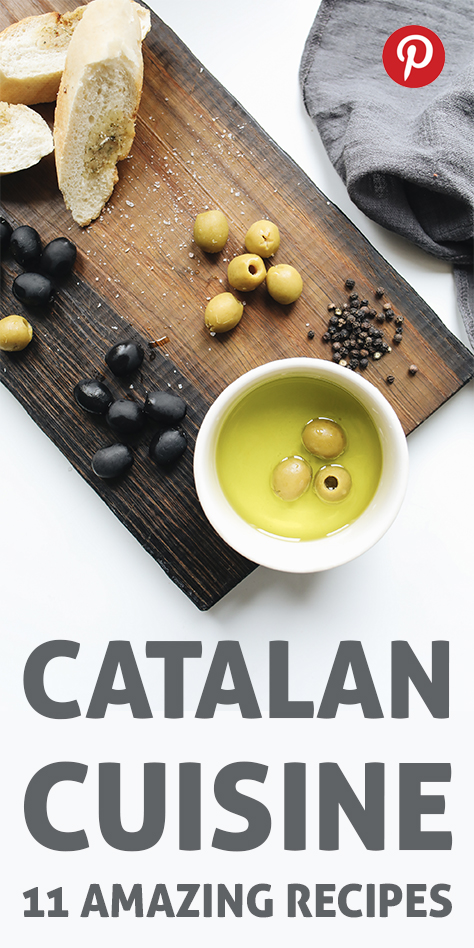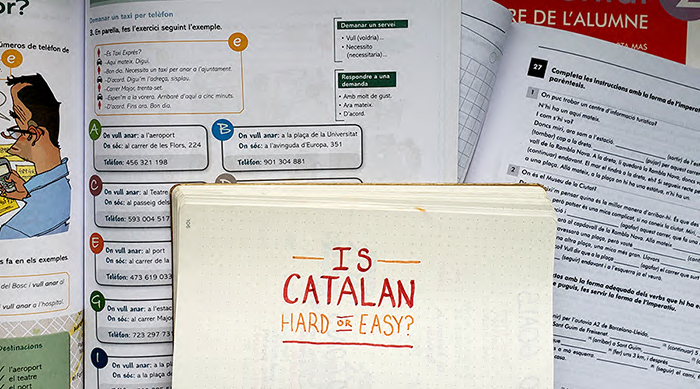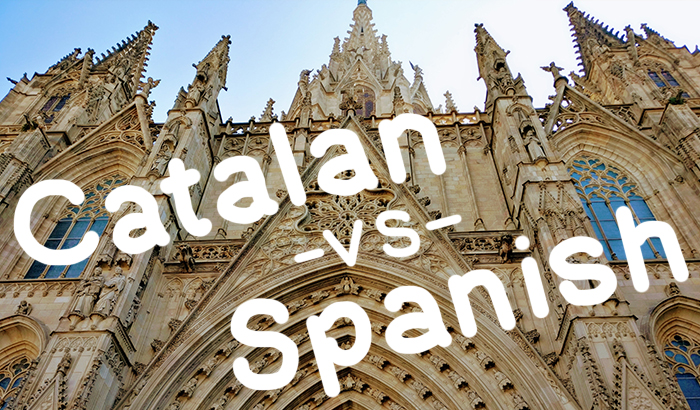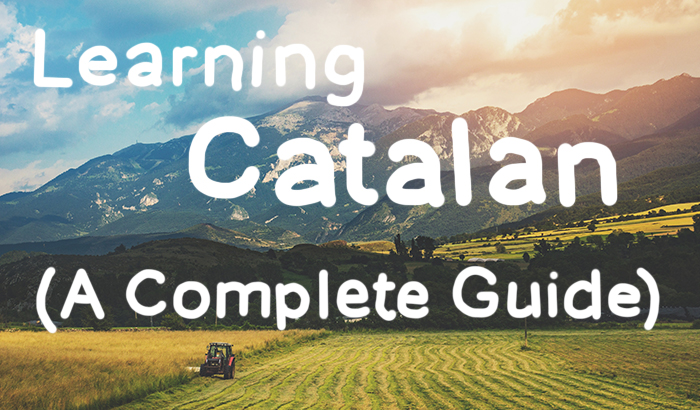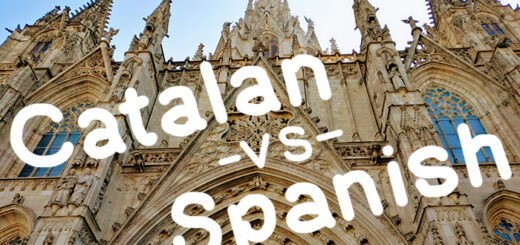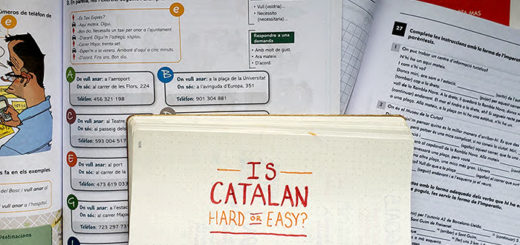Catalan Foods (11 coolest dishes + recipe links)
by Marissa Blaszko · January 8, 2021
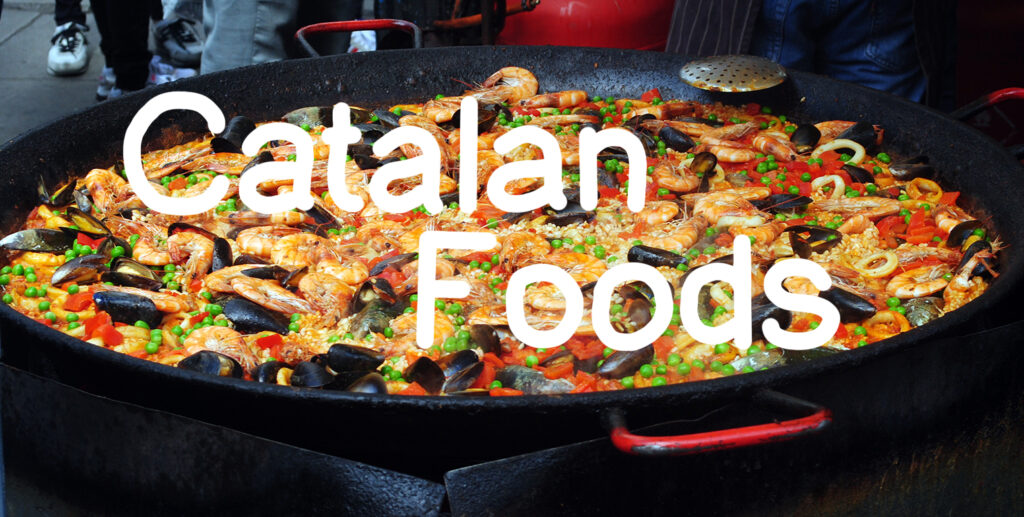
Catalan food is one of Europe’s hidden culinary gems.
That’s because Catalan cuisine, along with the Catalan language, was suppressed for a large part of the 20th Century under the fascist Franco dictatorship.
But the good news?
Catalonia is in a massive cultural renaissance right now.
This article will give you an overview of some of not only the most popular Catalan recipes but Catalan foods–that is, the ingredients of each recipe.
We’ll also link to the Catalan-language original recipe so you can follow them along yourself (and give you a little help so you can translate the Catalan-language recipes into English or any language of your choosing.)
Bon profit!
A Crash Course in Catalan Food
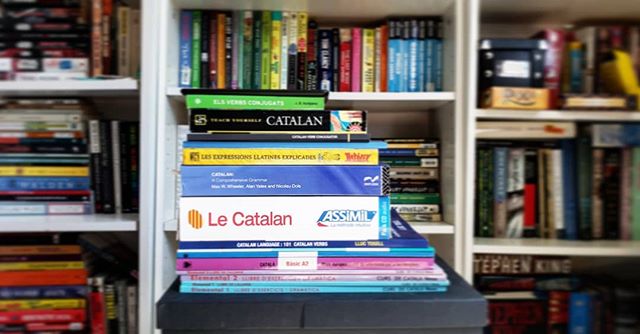
The goal of this article is not to give you a list of the list of the most popular Catalan foods, but to give you a taste of all it’s typical ingredients prepared in typical ways.
To understand why you’ll see the same few foods repeat over and over again in the recipes (bread, seafood, asparagus, anchovies) you’ll want to get a quick crash course in Catalan geography.
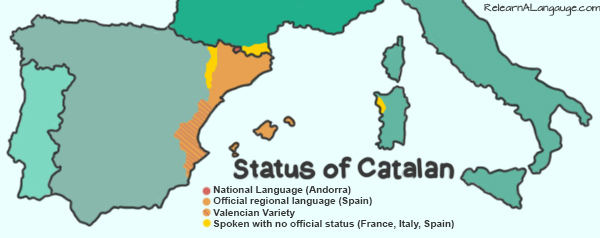
Catalan is spoken in a total of 4 countries (Spain, Andorra, France, and Italy) but in 2 major regions: the Pyrenees Mountains between and Mediterranean Coast.
With extreme changes in whether (and some extremely aggressive neighbors), most Catalan cuisine relies on root vegetables (like potatoes, onions, or asparagus), seafood (like shellfish or squid), or easily harvested food (like anchovies or mushrooms).
Plus: tons of bread, olive oil, or salt.
The Catalan recipes here were all selected to give you a taste of how these ingredients can work in harmony, and you’ll see them repeat often between dishes.
But because Catalan cuisine doesn’t rely heavily on historically “rich” spices (think about the wars the Spanish and English got into over the spice trade) the best advice I can give you if you attempt to cook any of these recipes is to use great ingredients in-season.
Catalan food is almost always easy to make (you’ll be impressed at how far you can get with the videos and my English translations) but it tastes best when real care is put into sourcing each item.
Catalan Foods for Snacks & Sides
1. Pa amb tomàquet
(Catalan tomato toast)
Ingredients:
- Fresh bread
- Fresh tomatoes
- Cold-pressed olive oil
- Sea salt (optional)
Instructions: So easy!
- Cut off a slice of the bread and rub an open tomato on it. Your goal is to get the tomato juices and seeds distributed all over the bread.
- Sprinkle on some good olive oil and optional sea salt.
Want to take it one step further? Try pa amb tomàquet i anxoves: tomato toast with anchovies.
About this classic Catalan food: A fresh bread, ripe tomato, and local olive oil (“pa amb tomàquet”) is the most iconic Catalan food I can think of. If you bring a Catalan friend to a social gathering, they will probably bring this.
But the second link (the one with anchovies) takes it one step further. This fantastic tapas recipe comes from la Costa Brava and the Catalan city of Girona. Salted anchovies are a popular Medetaranian tradition that you’ll see pop up in all sorts of Catalan foods on the side or as part of the main dish.
2. Allioli
(Aioli Sauce)
- Cold-pressed olive oil
- Fresh garlic
- Sea salt
- Egg yolk (optional)
Instructions:
- Finely dice fresh garlic. Put that garlic into a bowl, crushing it with a pestle until consistent.
- Add a pinch of salt.
- Slowly add olive oil while continuing to work the pestle until it becomes a thick paste. That’s it!
For a creamier version, you can add an egg yolk in place of some olive oil (1 yolk to every 6ish garlic cloves) but this is just one variation of the recipe.
About this Catalan recipe: We’re starting off this list with the Catalan food that is the most recognized internationally!
If you’ve ever had “aioil” sauce at a burger or generic Mediterranean restaurant, this “allioli” recipe is the real deal. Both garlic (“all”, pronounced /ayl/) and oil (“oli” pronounced /ol-y/) are staples of Catalan cuisine and found in virtually every Catalan recipe on this list.
3. Paté de bolets
(Mushroom-Spread Tapas)
Ingredients:
- Mushrooms (white, button, or bella will do nicely)
- White onion
- Cold-pressed olive oil
- Sea salt
- Fresh ground pepper
- Fresh parsley
- Fresh bread
Instructions:
- Slowly fry sliced mushrooms in olive oil, adding parsley and salt to taste
- In another pan, slowly fry onions until caramelized
- Put the mushroom mix, caramelized onions, and a pinch of fresh salt / fresh pepper into a blender or food processor and blend until smooth
- Spread onto fresh bread and serve with soup or other tapas
Click here for the original recipe.
About this Catalan recipe: Like many of the Catalan foods here, this recipe serves to give you a taste of Catalonia. Mushrooms (or “bolets”) are traditionally gathered from nearby forests and used in a wide variety of dishes–way too many to add in one list. But this simple tapas treat is a great sample of the traditional flavors used in Catalan food.
4. Crema d'espàrrecs i marisc
(Cream of Asparagus and Sea Food Soup)
Ingredients:
- 2 bunches green asparagus
- 1 leek
- 3 shallots
- 12 Muscles
- 12 Shrimp
- 1 liter of “white broth”
- White wine (optional)
- 1 Tbsp butter
- 300ml 35% cream
- Olive oil
- bay leaf
- Salt, pepper
- Croutons, crushed almonds (optional garnish)
Instructions: This Catalan recipe can be easily made without shellfish (and is still delicious) so if you have an allergy or don’t eat seafood fear not! Orange instructions include shellfish, green instructions are shellfish-free alternatives.
- In a large pot, fry shrimp in olive oil until thoroughly cooked. Add optional 1tsp cuddlefish pâté.
- Add muscles to shrimp pan until they open.
- Once muscles begin to open, add a bay leaf and a dash of white wine.
- Add broth to pot once muscles and shrimp are cooked and let pot simmer for 30min.
- In a pot, let broth, 1 bay leaf, and a splash of white wine slowly simmer.
- Peel and finely dice the potato, shallots, and leek.
- In a large pot, slowly heat 1Tbsp butter. At a very low temperature, slowly fry the potato, shallots, and leek in it.
- Remove the tips of the asparagus and put them to the side. Dice the remaining asparagus stems and add them to the slowly frying vegetable mix.
- Slowly fry the vegetable mixture for 15min or until mushy.
- In another pot, set the cream on a low temperature to begin to simmer off some water. The goal is to reduce the 35% cream to a 70% cream, so be careful not to burn it.
- If you are using seafood, remove it all from the broth and set aside. Remove any shells from the shrimp or muscles.
- Add the vegetable mix to the broth and let simmer for 10min.
- Remove broth/vegetable pot from heat. With a slotted spoon, remove any large vegetable chunks floating in the broth mixture.
- Using a hand blender, begin to blend any remaining vegetables in the broth until smooth.
- Put a strainer over the cream reduction. Pour in vegetable/broth mixture so any remaining vegetable fiber is strained out. Push through any remaining juices with the back of a ladle.
- Add a few drops of olive oil and a few shakes of fresh ground pepper to the cream soup.
- Add back in any seafood.
- Garnish with remaining asparagus heads (fried), croutons (optional), or crushed almonds (optional).
Click here for the original recipe.
About this Catalan recipe: Asparagus is a big deal in Catalonia. Again: this recipe isn’t anything perfectly traditional, but it gives you a good flavor of three very Catalan foods: soups, asparagus, and plenty of shell fish.
5. Cocarois
(Typical Mallorca Salad Dumplings)
Filling Salad Ingredients:
- A handful of swiss chard
- 1/2 head Cauliflower
- 1 small white onion
- A handful of spinach
- Cold-pressed olive oil
- Sea salt
Dough:
- 4 cups flour (aprx)
- A glass of water (room temperature)
- A glass of olive oil
- Yeast
Filling:
- Shred all of the raw salad ingredients and lightly dress with olive oil and sea salt.
Dough:
- In a mixing bowl, add the glass of water and a few pinches of yeast and stir until dissolved.
- Add olive oil to water/yeast mixture.
- Begin slowly incorporating the flour until a thick dough is formed.
Dumplings:
- Preheat the oven to 350* F / *C
- Roll out small circles of dough into flat disks
- Put a tablespoon of salad filling into each disk, then seel like a pierogi, empanada, or jiaozi Chinese dumpling.
- Lay on a baking sheet and bake for around 15-20min or until browned.
- Let cool for at least 5min before eating.
About this Catalan recipe: Mallorca is one of the regions where the Catalan language is spoken, and this video is actually by the most beloved Mallorcan YouTuber: Miquel Montoro.
Miquel (who’s currently in high school) shows viewers real life on his farm, from livestock to life hacks and yes–plenty of classic Catalan cuisine from his region.
Using Catalan Recipes In Your Language Learning?
Catalan Main Courses Recipes
6. Calçots amb salsa romesco
(Roasted Green Onions with Romesco Sauce)
Ingredients:
- Calçots (mild green onions)
- 1 piece fresh bread
- 1/2 cup of hazelnuts
- Head of garlic
- Small chili pepper
- 2 nyora peppers (substitute: dried chilis)
Instructions:
- (Night before: soak nyora chilis in water)
- Flash fry the piece of bread in olive oil
- Peel the head of garlic
- Remove any stems or hard parts from the tomatoes (but don’t slice or dice them)
- Remove the nyora peppers from the water and set the water aside
- In an oven-safe dish, place the bread, hazelnuts, garlic, chili pepper, tomatoes, nyora peppers, a cup of olive oil, half a cup of red wine, 1tsp of sea salt, and fresh ground pepper to taste.
- Bake all of the ingredients together for 45min at 180*C / 350* F.
- Once cooked, peel the skins from the tomatoes and peppers by hand.
- Add all of the baked ingredients and the leftover nyora pepper water into a food processor or blender and puree. Your sauce is done!
- For your calçots, grill them over an open fire until tender. Eat with your hands and dunk them in the sauce!
Click here for the original salsa romesco recipe
About this Catalan recipe: Roasted vegetables are a Catalan staple (as you’ll see continuing on this list) and calçots are probably the most iconic of all vegetable dishes.
7. Escalivada
(Roasted Vegetables)
Ingredients:
- Bell peppers
- White onions
- Eggplant
- Tomatoes
- Cold-pressed olive oil
- Sea salt
- Fresh ground pepper
- Fresh basil (optional)
Instructions: Super simple: place all of the ingredients in an oven-safe dish, cover with olive oil, and bake for 180*C / 350* F for 45min. Let them cool for at least 10min, and then peel off any skin or stems by hand. Slice into long strips and add salt, fresh pepper, olive oil, and optional basil..
Generally, these vegetables are served with a meat or fish side–but you can be creative!
About this Catalan recipe: Catalan friends have told me this is normally something their grandparents would eat and is less popular with younger generations: but still iconic.
8. Cigrons a la Catalana
(Catalan-Styled Chickpeas)
Ingredients:
- 400g cooked chickpeas
- 2 eggs
- 4 anchovies*
- 2 tomatoes
- 1 white sausage**
- 2 slices of bread
- 1 sprig of parsley
For the dressing:
- Two spicey pepeprs
- Extra virgin olive oil
- Salt
Instructions:
- To prepare the dressing, first bake the peppers (see above roasted veggies recipe) and once they’ve cooled slice them thinly.
- Add the peppers to a bowl or food processor, and add enough olive oil to lightly cover them.
- Add a pinch of salt and blend until smooth.
- To start the chickpea roast, first start by cubing the bread. Add it to a pan and, on low, fry it in olive oil.
- Once the bread is fried, put it to the side.
- *If you are using white sausages and anchovies, mince both finely and add them to a large bowl. If you don’t eat meat or fish, just add a pinch of salt later in this recipe.
- Hard boil both eggs. Once they’ve been cooked and cool, slice them thinly into strips. Put them to the side.
- Dice your fresh tomatoes and add them to the bowl with the sausage and fish. (If you skipped the sausage and fish, add the extra pinch of salt here.)
- Add the chickpeas to the bowl with the tomatoes and sausage/anchovies.
- Stir the ingredients together with the dressing.
- Top with first the layer of toasted bread, and then a second layer of eggs. Garnish dishes with parsley.
For additional serving ideas and an alternative recipe, click here.
About this Catalan recipe: This Catalan dish features another Mediterranean classic (chickpeas) but dressed with all the Catalan classics: olive oil, anchovies, salt, and tomatoes. (Noticing any patterns here?)
9. Paella Valenciana
(Valencian Pan Fry)
Ingredients:
Broth Base:
- 200 grams of rice
- 150 grams of green beans
- 80 grams of lima beans
- 60 grams of pinto beans
- 1 tomato
- Chicken or vegetable broth
- 1 red pepper
- Saffron
- Rosemary
- Extra virgin olive oil
Instructions:
BROTH
- (This part is off-screen in the video.) Wash the vegetables. Slice the pepper thinly.
- Add the beans and pepper into a deep pot. Fill the pot with broth so it’s 2″ over the vegetabies.
- Allow to simmer and slowly cook the vegetables.
RICE
- (Also off-screen.) Cook your rice as you normally wood (1 part rice to 2 parts water) with a pinch of saffron.
FRY
- In your large, deep pot, start by frying up any meats, shellfish, or plant protein in the olive oil.
- Once the protein has been cooked, turn down the temperature add the finished rice to the pan and stir to toast it for less than a minute.
- Dice the tomato and add it to the pan, leaving behind any thick parts.
- Add the vegetables from the broth mixture and mix them into the pan ingredients. Then, add in the broth until the mix is saturated. (You may not need all of the broth for this, since your goal is not to drown it.)
- Fry up the ingredients together as some extra liquid boils off. Don’t mix, but do shift the plan slightly. Your goal is to keep anything from burning, but the bottom rice will continue to toast and dry out as part of the base of the dish.
- As the liquid begins to boil off, add fresh rosemary as a garnish on top but don’t mix it in.
- When the liquid has boiled off, serve right in the pan!
About this Catalan recipe: The classic Mediterranean dish “paella” is often credited with being Spanish. But the word itself is actually the Catalan word for the thing it’s cooked in: a pan!
Well…. sort of. The region of Valencia is just south of the region of Catalonia. And when they speak in their mother tongues, they can understand each other.
Because of that, most linguists argue that both Catalan and Valencian are two dialects of the same language. This language is referred to as “Catalan” in most Mediterranean regions, but inside the Provence of Valencia they call their tongue “Valencian” (and some argue that it’s a separate language all together.)
So is this video a Valencian food recipe or a Catalan food recipe? I’m not sure, but either way it’s delicious!
Catalan Dessert Recipes
10. Panelletes
(Pinenut Sweets)
Ingredients:
BASE
- 200g almond flour
- 200g powdered sugar
- 60g eggwhites (2-3 eggs worth of whites)
COATING
- Remaining egg yolks
- Pine nuts
Instructions:
- Combine the flour and sugar thoroughly, then slowly add the egg white while mixing.
- Stir together using a wooden spoon until the dough is sticky (and you can no longer see dry flour or sugar).
- Put the bowl in the fridge for at least 3 hours (up to overnight.)
- After washing your hands, take a handful of the dough and roll it out onto a clean surface until it’s around 1″ thin and long.
- Cut off small bits and place them onto a greased baking sheet around 1″ apart.
- Continue until you’ve used all the dough.
- Place the pine nuts in a bowl and add a small amount of the egg yolks–just enough to make them a bit sticky. Mix with your hand.
- Picking up the sweet bits of dough one by one, put them in the pine nut mix, roll them in your hands to press in the pine nuts and turn them into spheres, and place them back on the baking sheet.
- After you’ve covered them all in nuts, roll them each into the remaining egg yolks one final time. Do this by rubbing the egg yolks on your hands and, over the bowl, taking each panellete one-by-one and giving it a final quick roll between your hands.
- Cook at 250°C for 3-6 minutes until toasted.
With this base, you can get creative with your own final touches: blackberry syrup, vanilla extract, powdered coffee, or shaved chocolate!
About this Catalan food: This cute and simple snack is traditionally prepared for All Saint’s Day (“Tots Sants” in Catalan).
11. Mona de llimona
(Lemon Catalan Easter Cake)
Ingredients
CAKE
- 140g all-purpose flour
- 100g brown sugar
- 100g white sugar
- 70g cream
- 40G almond flour
- 2 eggs
- 50g butter (melted)
- 5g baking powder
FROSTING
- 100g white sugar
- 60g butter (chilled)
- 2 eggs
- 5g corn starch
- 1 lemon
Instructions:
FROSTING
- Add the two eggs into a bowl along with the white sugar. Blend with a hand mixer until they’re fully incorporated and thick.
- In a separate bowl, stir the butter with a fork to turn it into a cool cream.
- Add the butter into the eggs/sugar blend and blend again until fully incorporated and even thicker.
- Squeeze 50g of juice out of the lemon and put the remaining lemon to the side.
- Slowly add the lemon juice and corn starch while continuing with the blender.
- Add the frosting to a small pot on very low heat, stirring by hand until it begins to congeal into a thick cream.
- Transfer the cream into a heat-resistant vessel.
- While the cream is still warm, add zest from the lemon (to taste).
- Cover with cellophane and add to the fridge to chill.
CAKE
- Preheat the oven to 160°C.
- Add the eggs and brown sugar to a bowl, stirring with a hand blender until blended.
- Add the white sugar and baking powder, continuing with the hand blender.
- Add the almond flour and all-purpose by shifting it through a strainer to avoid any clumps, continuing with the blender.
- Add the melted butter, incorporating all of the ingredients together with the hand blender. By the end, it should have a smooth, creamy texture that falls almost in ribbons.
- Grease a circular cake mold with butter and add a thin coating of flour to keep the cake from sticking.
- Add the cake batter to the pan and cook 35min for 160°C.
- After it’s been cooked, remove the cake and cool.
ASSEMBLY
- Once the cake is fully cooled, remove the icing from the fridge.
- Using a hand blender (or fork), cream the icing one final time to give it a more workable texture.
- Ice and decorate the cake!
About this Catalan recipe: The Mona de Pascua is a traditional Catalan cake given by godparents to godchildren on Easter. (They can be made in a variety of flavors, from chocolate to vanilla, so you can exchange the lemon juice for anything in this recipe.)
They’re often decorated with artificial feathers, decorative chicks, plastic eggs, or additional candies on top.
Curious about Catalan foods? (Try a taste of the language.)
I began learning Catalan out of pure curiosity: I happened to meet a speaker of the language and, when I accidentally overheard a phone call he had with his mom, was shocked to find out I understood huge parts of what he was saying.
(He wasn’t quite as surprised, however. He asked me if I spoke Spanish and French and, when I told him I did, told me that explained it.)
But when I sat down to study it myself, I was frustrated with the lack of textbooks or language apps.
So for over a year, I learned Catalan primarily through immersion.
(And that’s where all of these recipes come from: I learned how to talk about Catalan food by actually making Catalan food.)
So if you want to give the language a try, check out some of the below resources and see how you like it.

